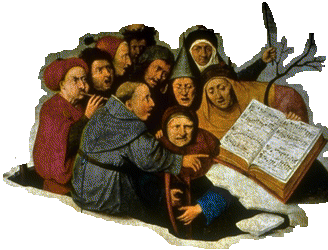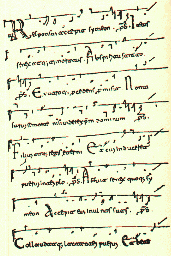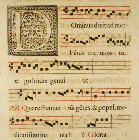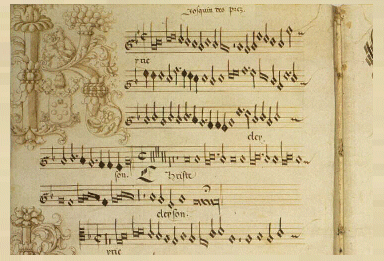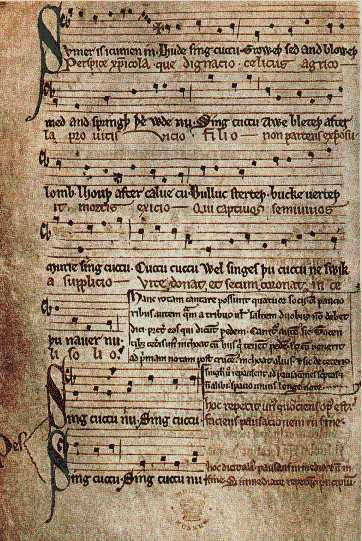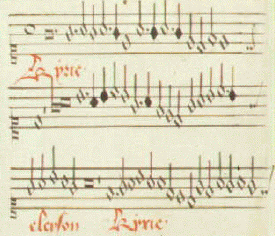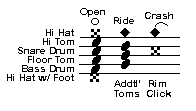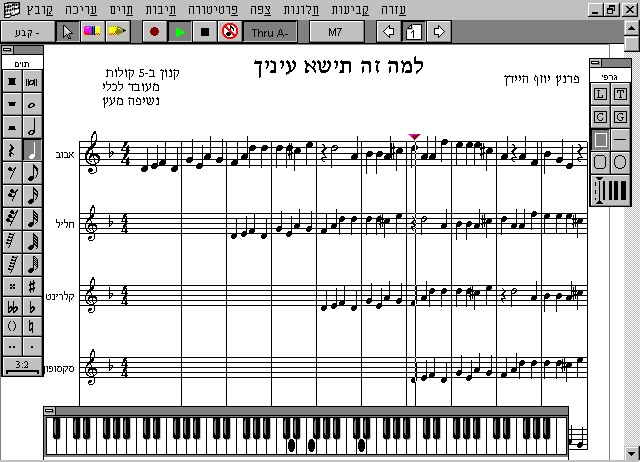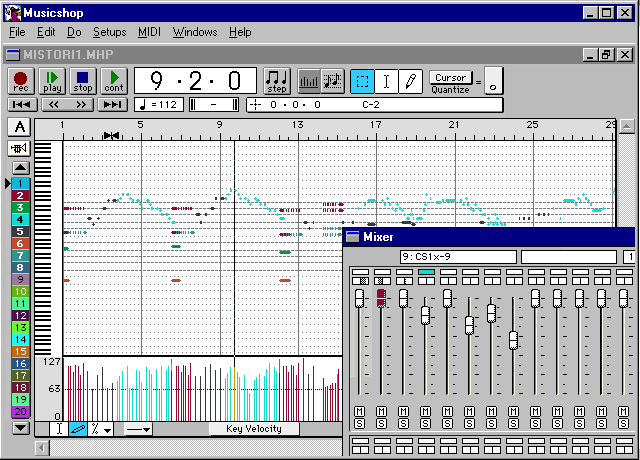The History of notationHow it all began...In ancient times stories were transmitted from one generation to another, and so were songs and tunes. The invention of writing brought about a breakthrough in the conservation of knowledge. This invention avoided human forgetfulness and reliance on human memory. Notes are the musical writing. By means of notes, we can preserve music accurately, in a way, allowing recreation of a musical piece that is not subject to the whims of human memory. Naming notesThe ancient systems of music notation used the Latin alphabet. In Germany, Great Britain, the United States and other English speaking countries, the letters system, that goes back as early as Roman times, is still in use: notes are called A, B, C. Note: the basic C major scale starts at C: C, D, E, F, G, A, B, C. Most of the music world preferred to base the system of notation on
the note names given by the Benedictine monk Guido
d'Arezzo (Guido from the town of Arezzo 
Notation and writingThe oldest notation in the Western World was based on neumes used by the composers of the Catholic Church. The neume does not describe a single sound, but a motif of several notes. Neumes do not indicate sound duration either, for they were marked above the text, and the words determined note length. In the next stage of church music development, there was a need to indicate the precise sound pitch, and then a single horizontal line was marked, and notes appeared as little squares. Soon after that, mores lines were added, and the stave used in Guido's time included 4 lines. This system is still in use in church music. An 11th century musical
piece, written in neumes on a single line stave, in an F clef. Duration markings above
the melody notes. In secular music, the musical line continued to develop from 4 lines in stave:
and the final system accepted was of 5 lines, and that became the stave known to us.
The grand stave includes two regular staves between which is the note C. There were also attempts to create 6-line staves. For example, the score
of the ancient canon "Sumer is icumen in"
In ancient music, note duration was not marked, since rhythm was to be determined by the text sung. After a number of attempts, mensural (measured) writing was invented, in which every duration had a different sign:
Nowadays notation and duration marking emerged from the mensural writing, after several modifications and developments:
There are special notations for drums and percussion.
Notes in the 20th CenturyMusic in the 20th century gave birth to modern, innovative notation methods, that expressed the variety of creation manners and the collapse of musical conventions of the new era. For instance, flow-charts and electronic diagrams present means of conserving and transmitting the musical piece's record. Modern notation techniques give consideration to the fact that sometimes the possibility for a precise recreation of a work is non-existent, and philosophically - should not be existent. Notes and computersThe modern systems of writing and recording technology offers, nowadays, enable each and every one of us to write notes in a quality that was formerly preserved for expert musical scribes. Modern computer programs allow writing notes, with the utter most facility and quality, from parts to individual players to scores and professional music books. In addition to the easiness of writing with their help, this kind of software enables us to hear the notes as sounds, perform pitch changes (transpositions) and write the notes of a tune by means of keyboards hooked up to the computer, via MIDI (Musical Instruments Digital Interface) connection.
 |

